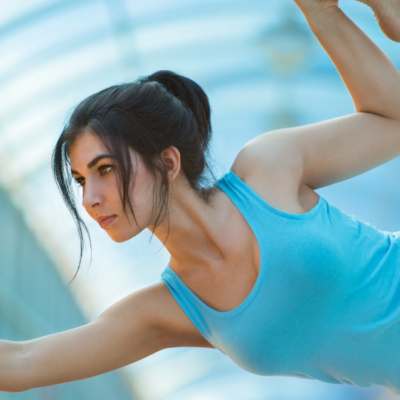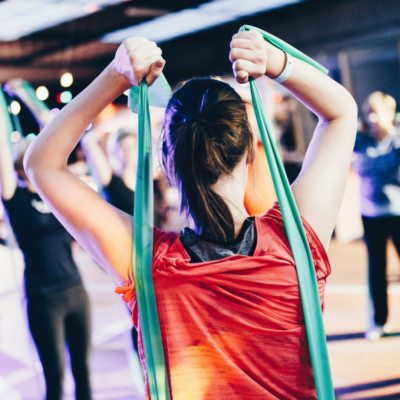How often have you arrived at your exercise class, PT session or sports training just in the nick of time – or 5 minutes late – and launched yourself enthusiastically into whatever everyone else is doing? It could be a recipe for disaster – a torn muscle or a pulled tendon. No fun.
Warming up is Exercise 101! Warming up isn’t a waste of time, it reduces your risk of injury and gets your body and mind ready for exercise.
So, just what makes a good warm up?
Technically speaking it is “a period of light or sub-maximal activity preceding physical activity or exercise of a more intensive nature. The warm up aims to improve the extensibility of muscles and the mobility of joints to protect against injury and to aid performance.”
And in plain language, what that means for you is:
1. Firstly, you need to do some full body movements using as many muscle groups as possible at a light intensity to get the blood pumping, increase your heart rate and generate a slight sweat. Start gentle and slowly increase the intensity. Light intensity means if you were to rate the effort or intensity of the warm up out of 10, where 1 is no effort at all and 10 is running flat out then you would be aiming for 5-6 out of 10. So, start at 5 and work towards 6 out of 10. This part of the warm up can include activities like gentle jogging, swimming or skipping; make sure you are swinging your arms and getting the whole body involved. You’d do this light movement for at least 5 minutes.
2. Then you’d do a specific warm up. Whatever muscles and joints you will be using in your workout should be involved in this warm up. If you are training for a sport you would include some of the activities and skills you might use in the sport such as running with a ball or tagging in touch football or passing a netball between netball players. If you are training for a gym session with your PT you might do a less intense version of some of the exercises you expect to do, like push ups prior to a bench press. This specific warm up should last for about 5 minutes.
If you are warming up outdoors in cold weather or you have the air con blasting then warm up for longer.
If you are an older person or a child or have had a recent injury take more time to warm up and start more gently. Follow your health professional’s advice about what you can and can’t do.
And do something you enjoy doing to try to make it fun. There’s no point skipping if you have LBL (light bladder leakage) at each skip, Ladies!
3. And lastly, you’d do some dynamic stretching. In the old days we used to do static stretching both before and after exercise, but studies have shown dynamic stretching before and static stretching after exercise reduces injury and improves performance. Watch a football training session or before a match and you’ll see the players kicking their butts with their heels and tapping their hands with their knees – that’s dynamic stretching.
Dynamic stretching uses the force produced by a muscle to generate momentum and take a joint through a full range of functional movement patterns so get your trainer or PT to teach you the dynamic stretches suitable for your activities.
And why are we doing all this work before we actually get to work out?
The benefits of a good warm up include:
- It elevates your body and muscle temperature.
- Your breathing rate increases, increasing oxygen supply.
- Your blood flows faster, providing more oxygen and nutrients where they are needed in the muscles.
- It prepares your joints, tendons and ligaments to be supportive.
- Your joint range of movement (ROM) is greater and your synovial fluidity increases (that’s good for the knees and other joints).
- Your ability to do physical work improves which is important for strength and power activities.
- There are also psychological benefits of warming up – it gives your mind time to focus on the exercise ahead.
The benefits of a warm up – done properly – can’t be under-estimated!
Remember, if you notice any pain stop immediately and seek medical advice.
To sum up:
- Get to your training session or work out early – at least 15 minutes early.
- Do at least 5 minutes of light intensity full body movement.
- Do 5 minutes of specific movements for the session you are about to do.
- And, finally, do 5 minutes of dynamic stretching.
Now, it’s time to do your work out!
Enjoy.
get dale’s support now register for weekly tips






Comments (0)